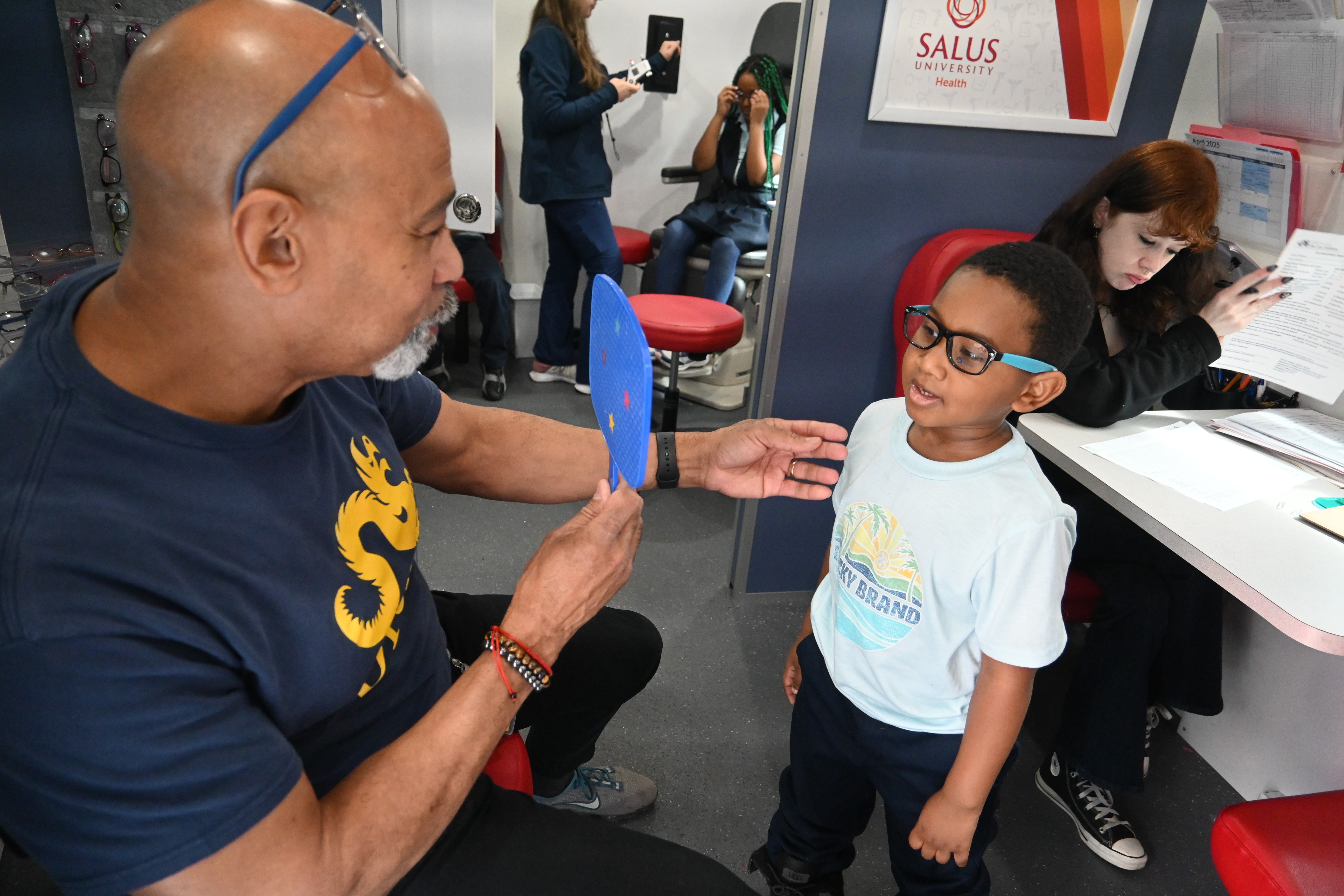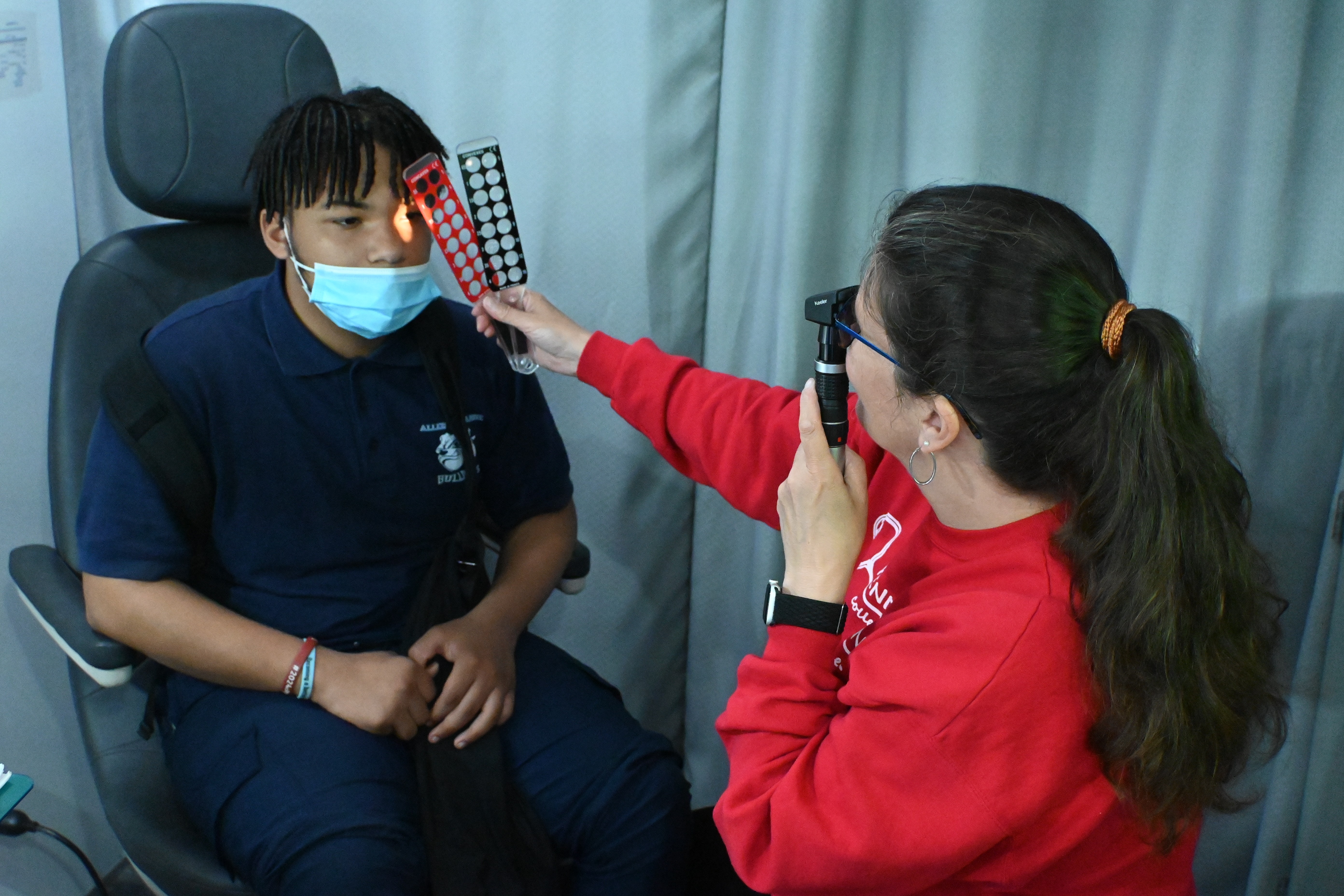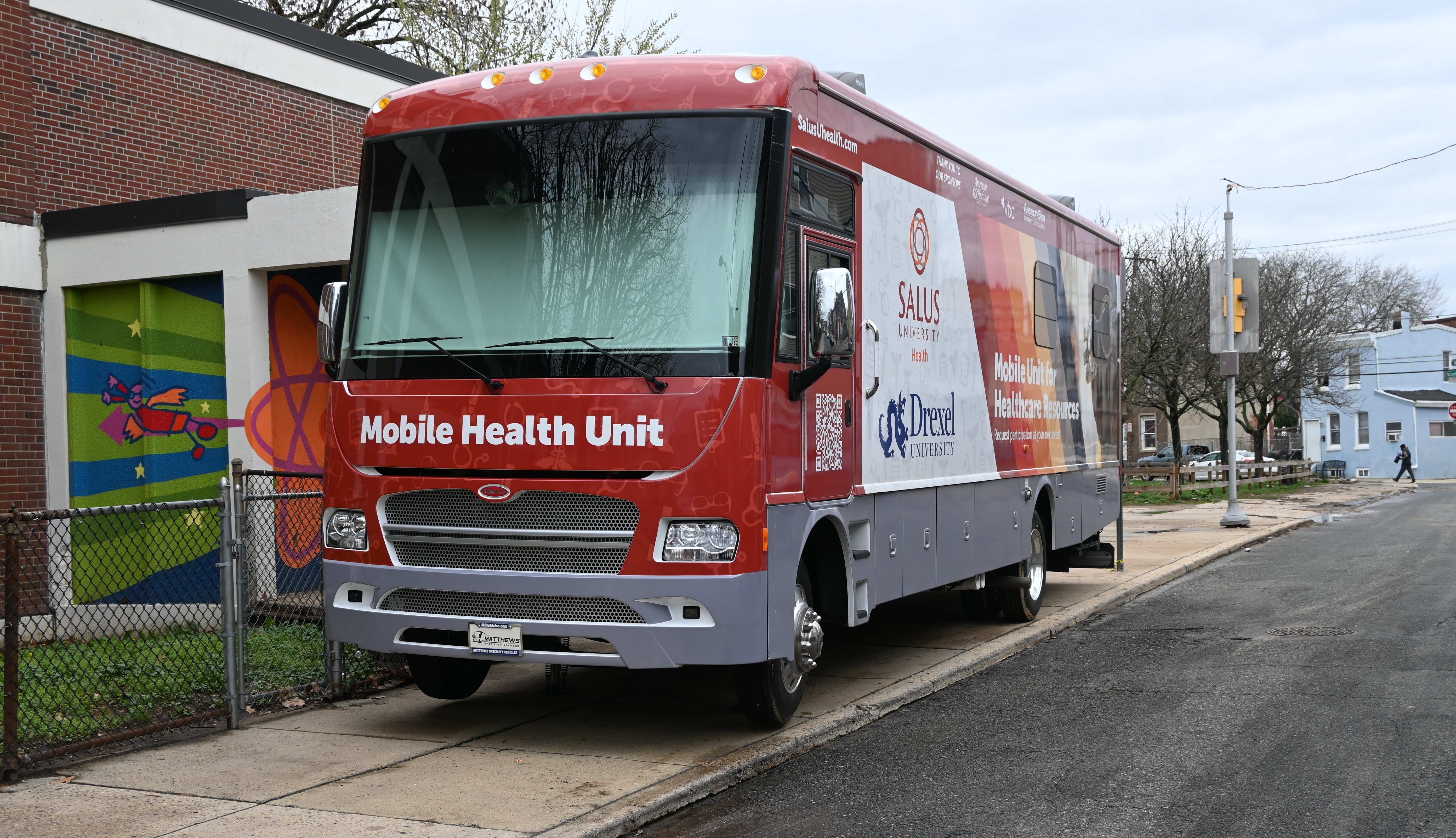Philly Students Get Eye Exams Onboard Mobile Health Unit

Allen M. Stearne Elementary School in the Frankford section of Philadelphia has a diverse group of students. And, when they get to school, teachers and administration often find out that many suffer from poor vision.
“I have a lot of kids who come to me who are struggling in the classroom and they’re having headaches,” said Marybeth James, RN, BNS, CSN, school nurse for the past three years. “We have them see an eye doctor and lo and behold, they need glasses.”
 But getting the students glasses wasn’t always as easy as it may appear. Many students at Stearne Elementary haven’t ever seen an eye doctor.
But getting the students glasses wasn’t always as easy as it may appear. Many students at Stearne Elementary haven’t ever seen an eye doctor.
But these students and their parents need not worry. If they’re having trouble seeing, the Mobile Unit for Healthcare Resources (MUHR) from The Eye Institute (TEI), Salus at Drexel University Health, has been making regular stops at Stearne for the past several years, offering vision screenings, and then follow up comprehensive eye exams and glasses for those students who need them. TEI is the clinical facility for the Pennsylvania College of Optometry.
According to Brandy Scombordi-Raghu, director of Optometric Clinical Research at TEI and coordinator of the School Vision Programs, a recent stop at the school by the mobile unit resulted in 22 students having their eyes examined, all of whom were prescribed glasses. In addition to Dr. Scombordi-Raghu, the mobile unit was staffed by two Pennsylvania College of Optometry (PCO) Doctor clinical interns, optometric assistant Corina Elston and optical assistant and bus driver, Steve Lee.
The school vision program run through TEI is for underserved children in the Greater Philadelphia area. TEI provides vision screenings to help the school nurses and comprehensive eye exams both at TEI’s pediatric department and on the mobile unit.
The MUHR is a big bus transformed into a mobile clinic and includes all the essential equipment needed to complete a comprehensive vision exam, as well as hearing and speech-language screenings for children. The new and improved version of what used to be called the “Big Red Bus,” was first introduced in June 2024. It has additional capabilities with more optimized space usage and workflow, a generator and updated electrical systems.
